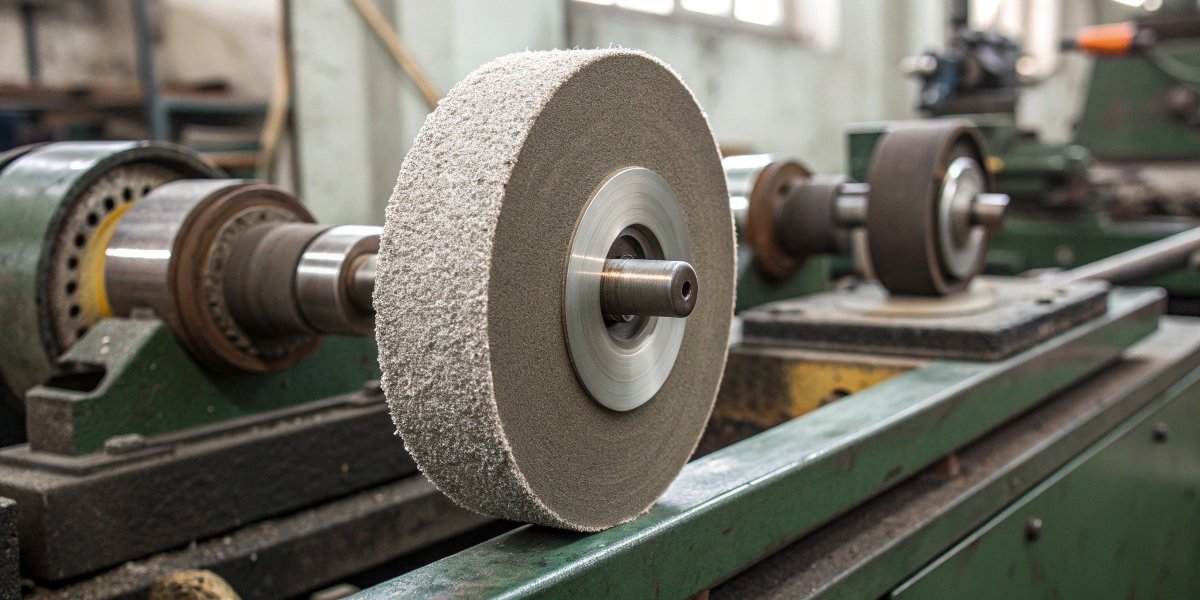
Are your wheels getting clogged when grinding soft metals? This common problem ruins the workpiece finish, creates intense heat, and can even be dangerous. It is a frustrating and costly issue.
You use a hard wheel for soft materials to extend the wheel’s life and prevent clogging. A hard bond securely holds the abrasive grains, which stay sharp longer on soft metals, ensuring efficient cutting and a better finish.
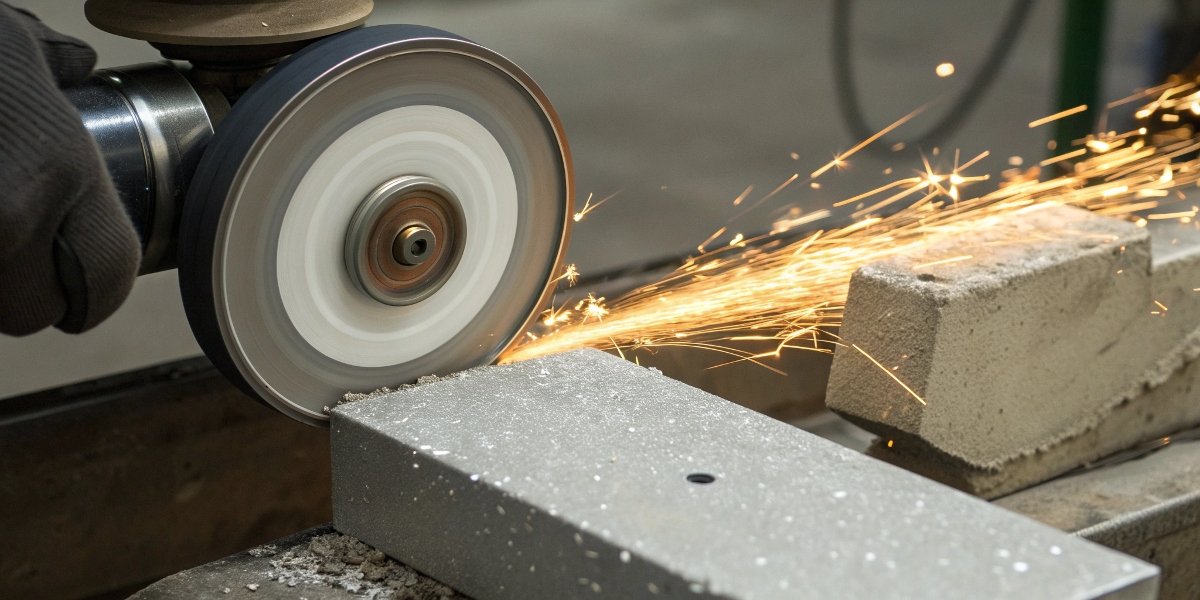
It is the most counterintuitive rule in our industry, and it’s the one I spend the most time explaining to new customers. The idea that you should use a hard wheel1 on soft material and a soft wheel on hard material sounds completely backward. It just doesn’t feel right. But in my nearly three decades of manufacturing abrasives here in Henan, I have seen this principle proven time and time again. Understanding this single concept is the most important piece of knowledge you can have. It will save you money on tools, improve your production quality, and make your entire operation run more smoothly. Let’s break down exactly why this strange rule works.
Why is a hard grinding wheel used for soft material?
Are you dealing with clogged wheels when working with aluminum? This "loading" generates extreme heat that can damage both the wheel and your expensive workpiece, forcing you to stop work.
A hard grinding wheel is used for soft material because the abrasive grains stay sharp for a long time. The hard bond holds these grains firmly, preventing premature shedding and stopping the gummy material from clogging the wheel’s surface.
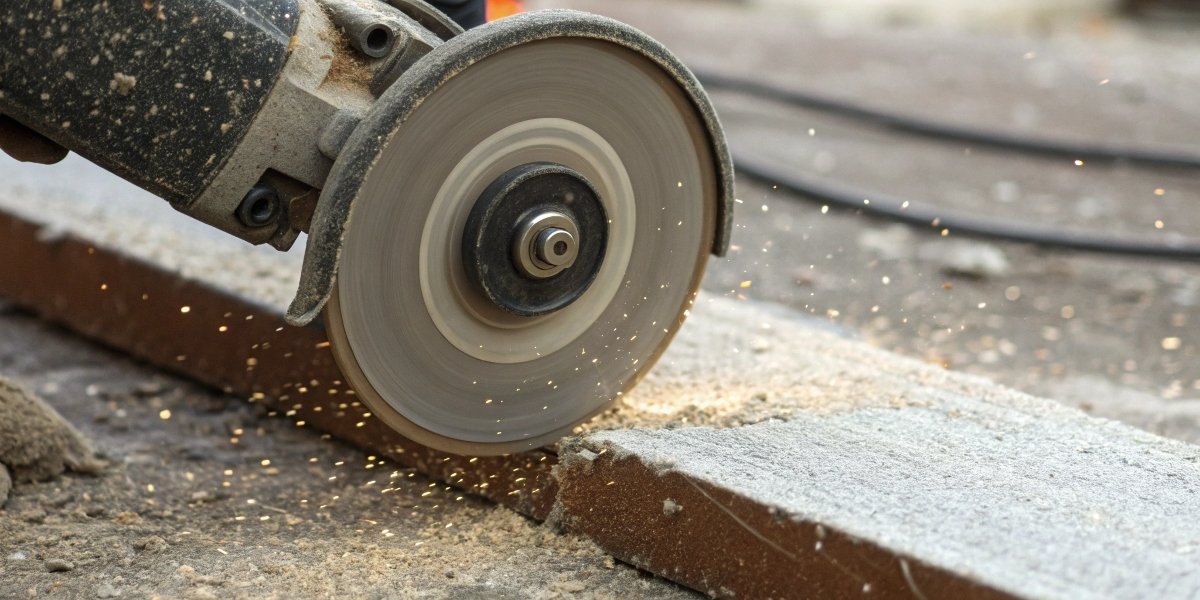
There are two main reasons why this method is the correct one, and they both solve common grinding problems. My insight here is that it is all about wheel life2 and heat. First, a hard wheel lasts longer. Soft materials like copper or aluminum are gummy, but they are not very abrasive. They do not dull the sharp points of the grinding grains very quickly. Because the grains stay sharp, you want them to stay in the wheel and continue to do their job. A hard bond provides the strong "glue" needed to hold those grains in place for as long as possible. If you used a soft wheel, the bond would release the grains while they were still sharp and useful, and the wheel would wear down incredibly fast. Second, a hard wheel prevents clogging3, which we call "loading4." Soft materials produce large, sticky chips. A hard-bonded wheel is usually made with a more open structure, meaning there are larger gaps between the abrasive grains5. These gaps give the gummy chips a place to go, so they are thrown clear instead of being smeared into the face of the wheel. This prevents the heat buildup6 that damages both the material and the wheel itself.
What is the difference between hard and soft grinding wheels?
Are you confused by the terms "hard" and "soft" in grinding wheel catalogs? This misunderstanding leads to buying the wrong tools, which wastes a lot of money and slows down production.
The difference is not the abrasive material, but the strength of the bond that holds it. A hard wheel has a very strong bond that retains grains. A soft wheel has a weaker bond that releases grains more easily.
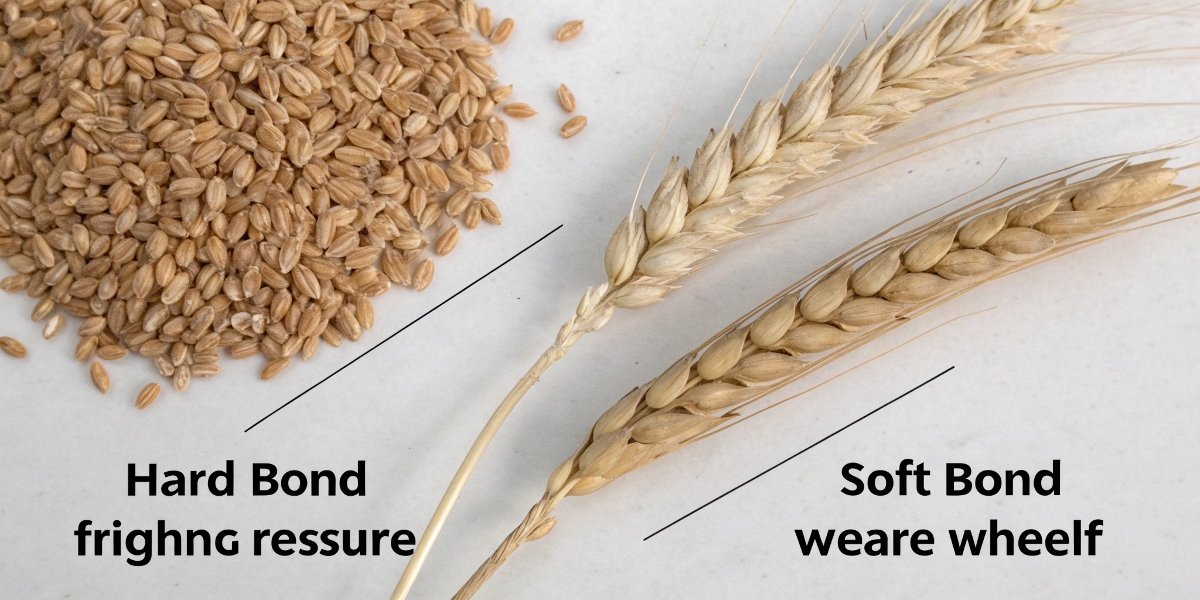
When we talk about the hardness of a wheel, we are talking about its "grade." This grade has nothing to do with the hardness of the abrasive grains themselves. Diamond and silicon carbide are always extremely hard materials. The grade refers to the strength of the bonding agent, which is the glue that holds all the grains together to form the wheel. Manufacturers use a letter system to indicate this grade, typically running from A (very soft) to Z (very hard). A hard wheel, with a grade like P, has a very strong, tough bond. It will hold onto its abrasive grains even under high pressure. A soft wheel, with a grade like H, has a more fragile bond. This bond is designed to break down and release grains as they become dull. This difference in bond strength7 is what determines the wheel’s cutting action and makes it suitable for different materials.
Grade and Bond Characteristics
| Wheel Type | Bond Strength | Grain Retention | Primary Use |
|---|---|---|---|
| Hard Wheel | Strong (e.g., Grade M-Z) |
High | Soft Materials (e.g., aluminum, copper) |
| Soft Wheel | Weaker (e.g., Grade A-L) |
Low | Hard Materials (e.g., tool steel, carbide) |
Are soft grade wheels more suitable for use on hard materials?
Are you grinding tool steel but the surface gets burned or glazed? This means your wheel has stopped cutting and is just rubbing, a problem that can ruin the expensive steel part.
Yes, soft grade wheels are absolutely essential for grinding hard materials. Their special ability to break down and release dull grains creates a self-sharpening action that is necessary for cutting hard steel or carbide effectively.
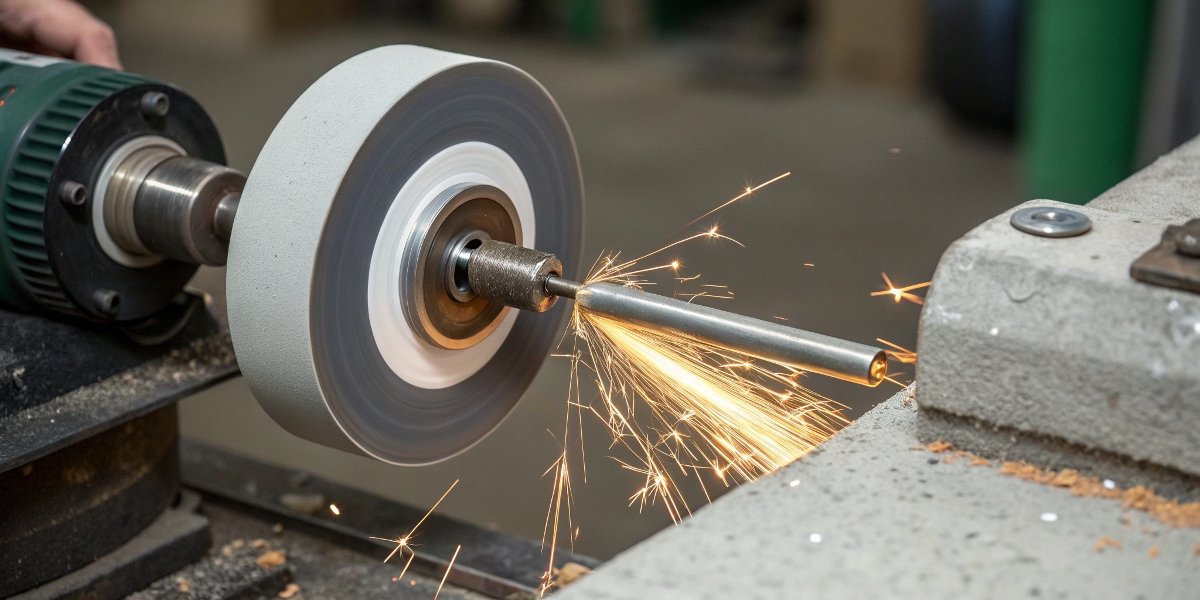
This is the other side of our main rule. When you grind a very hard material like a piece of hardened tool steel, the microscopic sharp points on your abrasive grains become dull very quickly. If you tried to use a hard-bonded wheel, those thousands of newly dulled grains would stay stuck in the wheel. Since they can no longer cut, they just rub against the steel. This rubbing action creates a tremendous amount of friction and heat. The heat can burn the surface of the workpiece, ruining its temper and making it useless. This is where the magic of a soft wheel comes in. Its bond is specifically designed to fail. As a grain becomes dull, the force on it increases, and the soft bond breaks, shedding the useless grain. This immediately exposes a brand new, sharp abrasive grain right behind it. This continuous cycle of dulling and shedding is what we call a "self-sharpening" effect. It is a controlled breakdown that keeps the wheel cutting coolly and cleanly.
How to make a grinding wheel act softer?
Are you stuck with a wheel that is too hard for your job? You risk glazing the wheel or damaging the part, but you don’t have time to wait for a new order.
You can make a wheel act softer by changing your machine’s settings. Increasing the workpiece speed or the depth of cut will make the wheel break down faster, simulating a softer grade.
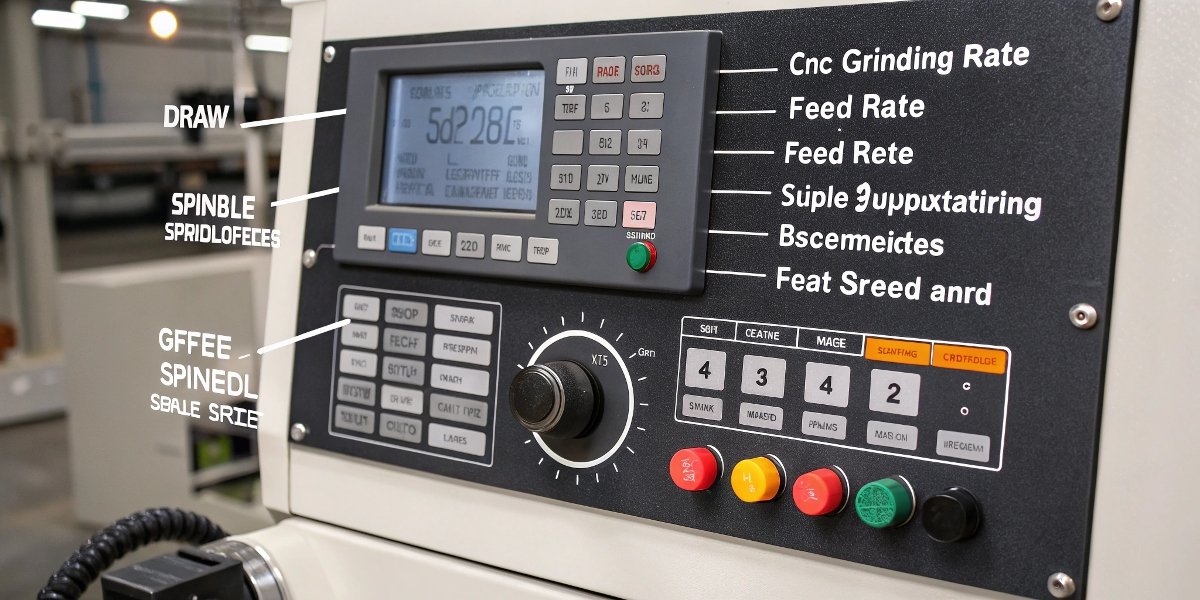
While choosing the right wheel from the start is always the best solution, experienced operators know how to manipulate grinding parameters8 to change a wheel’s performance. The "hardness" a wheel shows is really about its reaction to pressure. By changing your machine settings, you can increase the pressure on each individual abrasive grain, forcing a hard wheel to act like a softer one. Decreasing the wheel’s rotational speed (RPM) means fewer grains do the work per second, so the force on each one goes up. Increasing the speed of the workpiece as it moves past the wheel has a similar effect. Taking a deeper cut (increasing the infeed) also forces each grain to remove more material, which increases the stress on the bond. These adjustments increase the rate of wheel wear, but they can get you through a difficult job by forcing the wheel to break down and expose new, sharp grains. It is a useful trick, but always contact your supplier, like us at Reliable (RL), for the correct wheel for long-term production.
Changing a Wheel’s "Apparent" Hardness
| To Make Wheel Act Softer | To Make Wheel Act Harder |
|---|---|
| Decrease wheel speed | Increase wheel speed |
| Increase workpiece speed | Decrease workpiece speed |
| Increase depth of cut | Decrease depth of cut |
Conclusion
The most important rule in grinding is also the strangest: use hard wheels for soft materials and soft wheels for hard ones. Following this simple principle ensures efficiency, quality, and a longer life for your tools.
-
Understanding hard wheels is crucial for effective grinding of soft materials, ensuring better performance and tool longevity. ↩
-
Extending wheel life saves costs and improves efficiency; discover tips to maximize your tools. ↩
-
Preventing clogging is essential for maintaining efficiency and quality in grinding operations. ↩
-
Understanding loading can help you avoid common grinding issues and improve your workpiece finish. ↩
-
Abrasive grains are key to grinding performance; understanding them can enhance your machining results. ↩
-
Preventing heat buildup is crucial for tool longevity and workpiece quality; learn effective strategies. ↩
-
Bond strength affects wheel performance; knowing this helps in selecting the right wheel for your application. ↩
-
Grinding parameters significantly impact results; understanding them can optimize your grinding process. ↩
Written by
leeon
You may also be interested in:
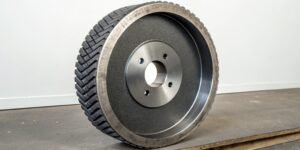
What's the application of CBN Wheels?
Struggling with grinding hard steels? Frequent wheel changes and poor finishes can hurt your bottom line. We have found that CBN wheels provide the durability
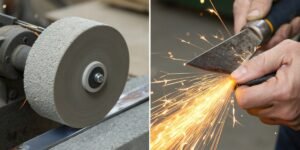
What is the difference between grinding and honing a blade?
A dull blade is a frustrating problem. It slows down production and ruins your workpiece. Using the wrong technique to fix it can cause permanent
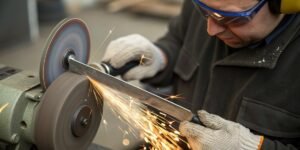
How to sharpen a knife on a bench grinder?
Is your dull knife slowing you down? A bench grinder seems like a quick fix, but you’re worried about ruining the blade. You need a

Can you use an angle grinder as a sander?
Your sanding project is tough, and your regular sander is not powerful enough. You look at your angle grinder. It has the power, but is
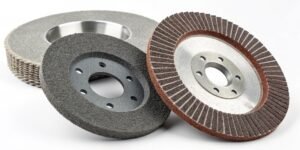
How to judge the quality of a grinding wheel?
Choosing the wrong wheel wastes money and ruins parts. Poor quality leads to downtime and rejection. A few key checks can guarantee you pick the

What is low stress grinding?
Struggling with parts failing due to hidden stress from grinding? This common issue causes cracks and reduces component life, costing you money. Low stress grinding
